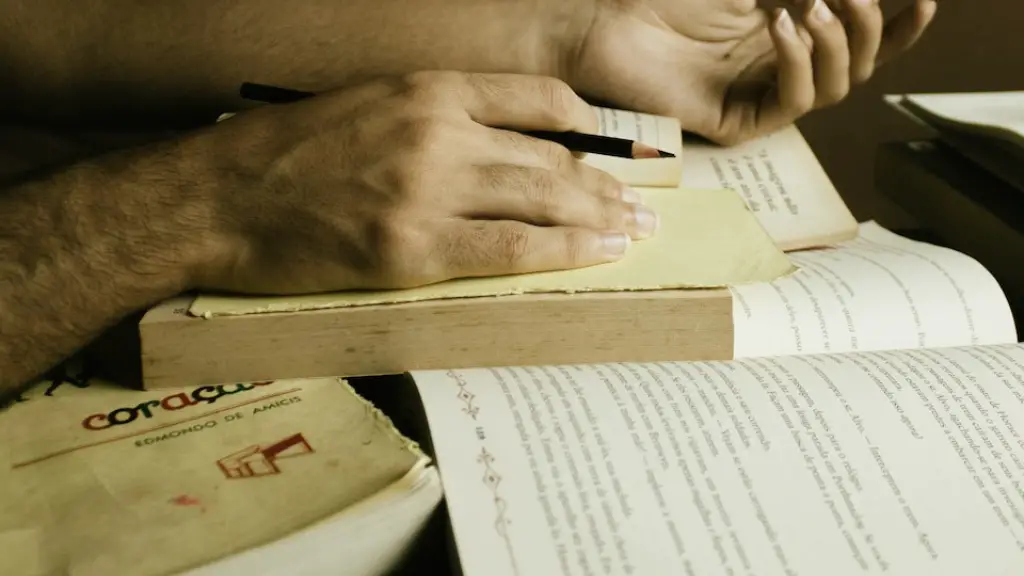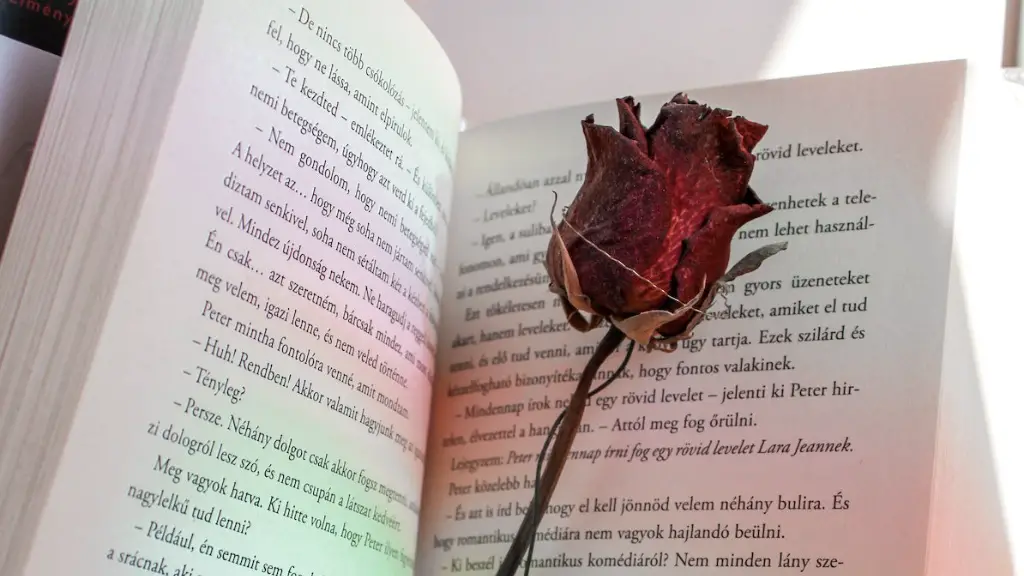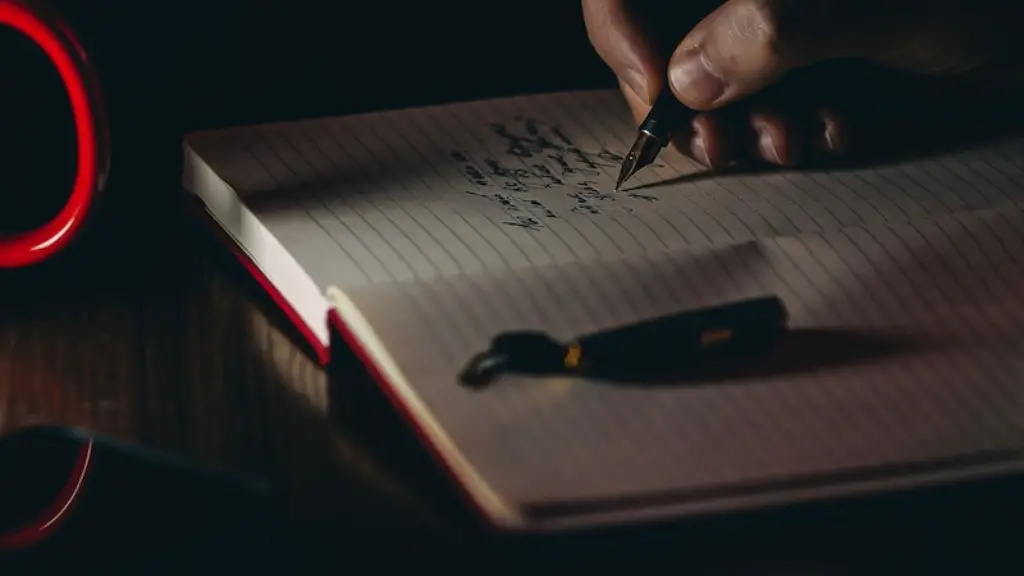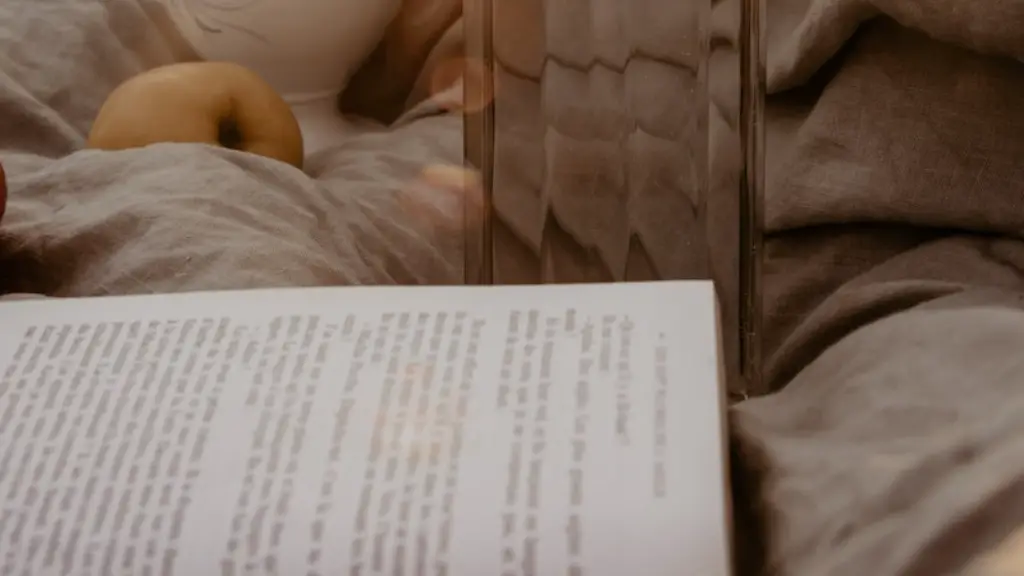Poetry, in general, is an art form that has evolved over centuries to a point where multiple forms of it exist today. One of the most prominent forms is that of the couplet. Simply put, a couplet is a stanza made up of two lines of verse. The two lines typically rhyme at the end and have the same meter or rhythm. In poetry, such lines are known as a unit of a couplet’s structure and, when assembled, it creates a unique effect when read aloud. It is oftentimes known as the most recognisable form of poetic structure.
When writing, poets usually use couplets as a tool to express their feelings, thoughts, and emotions. In order to create a successful couplet, the two lines must share some type of parallelism, meaning they must have a correlation in terms of tone, language, style, and/or subject matter. By doing so, it allows the poet to create an internal consistency and a sense of harmony and unity.
Couplet poems can range in length, with some being only two lines, others being longer. Some poets even form what is known as a “Heroic Couplet,” which is composed of two rhymed lines that also contain end-stopped lines. This particular type of couplet allows the poet to concentrate on the subject matter of their writing and express it in a smooth-flowing manner.
However, the most renowned type of couplet is still the “Closed-Formed Couplet” – two rhymed lines that do not contain end-stopped lines. This type of couplet allows the poet to flow from one line to the next line easily, while also connecting the two lines together. This has been a popular form of poetic structure for centuries, and is currently the most used type of couplet in many poetry circles.
To illustrate this further, here is an example of a simple closed-form couplet:
“The sun is bright and shining bright,
The clouds now block its warming light.”
In this example, the two rhyming lines contain a parallelism of tone, language, and subject matter. Additionally, they follow the basic structure of a closed-form couplet, of two lines composed of end-stopped lines. This type of structure not only keeps the couplet together, but it is also able to convey the poet’s thoughts in an expressive and meaningful manner.
Poets often use couplets to discuss a single topic or thought, exploring it in two lines. They contain a steady rhythm and beat that gives the reader a sense of clarity, as well as a feeling of comfort and security. As a result, couplets are often used to conclude a poem, ending things on a high note.
In short, couplets are one of the oldest and most beloved forms of poetic writing, having been used for centuries by some of the best poets. They provide writers with a great opportunity to express their thoughts and feelings in an organized and concise manner, while also creating a rhythm and flow that is unique to the form.
Types of Couplets
Couplets come in a few distinct forms, each with its own set of rules and conventions. The most common types include Closed-Form, Envelope, and Heroic.
The closed-form couplet is the most popular and recognizable type and is composed of two end-stopped lines with a poetic meter and matching rhyme scheme. It is sometimes known as the “golden-rule” couplet, meaning both lines must match the same rhythm, sound, and feel.
The envelope couplet consists of two non-end-stopped lines with the same rhyme pattern. This type of couplet is often used to create an illusion of continuity, as the poet is able to move seamlessly between one line and the next without losing the thread of their argument.
The heroic couplet is the longest of the three, consisting of four rhymed lines. The heroic couplet is often used to narrate or discuss a single scene or moment. It is typically used to create a strong impression of imagery and emotion.
Famous Couplets
Couplets have been a popular form of poetry for centuries, and many famous poems have been written in a couple form. Here are some examples of recognizable couplets from a few of the most famous poets in history:
William Wordsworth’s “Daffodils”:
“I wandered lonely as a cloud;
That floats on high o’er vales and hills”
John Milton’s Paradise Lost:
“Of Mans First Disobedience, and the Fruit
Of that Forbidden Tree, whose mortal taste”
William Shakespeare’s Romeo and Juliet:
“My bounty is as boundless as the sea,
My love as deep; the more I give to thee”
Uses of Couplets in Poetry
Couplets are often used to express and explore emotions and themes. They can be used to compare and contrast concepts, or discuss an idea from multiple angles.
They can also be used to convey a strong narrative, or to create a dialogue between two characters. Their ability to express deep and powerful thoughts in a few short lines makes them a popular choice for poets, regardless of genre.
Couplets are not only used to convey emotions, but also to provide contrast. They can be used to break up a poem and contrast bleak thoughts with hopeful and uplifting messages, creating a deeper and more meaningful layer of understanding.
Couplets are also often used to provide closure. By using them to end a poem, the poet can provide a feeling of resolution and bring the piece to its logical conclusion.
How to Write a Couplet
Writing a successful couplet can be a challenge, but it is certainly not impossible. Here are some tips to help you craft your own couplet:
- Start with a single idea or concept and thoughtfully explore it.
- Choose words carefully to make sure you rhyme correctly.
- Pay close attention to rhythm, meter, and sound.
- Consider the tone, imagery, and emotions that you want to convey.
- Be sure to vary your words and avoid redundancy.
- Read your couplet aloud to make sure it sounds right.
Conclusion
A couplet is a form of poetry that consists of two lines of verse. It often rhymes at the end and contains a consistent meter or rhythm. There are several types of couplets, the most common being the Closed-Form and Envelope couplet. Poets often use couplets to explore emotions, contrast topics, and close out their poems. Writing a successful couplet is not difficult once you understand how it works, and with the right approach, anyone can create a powerful couplet.





